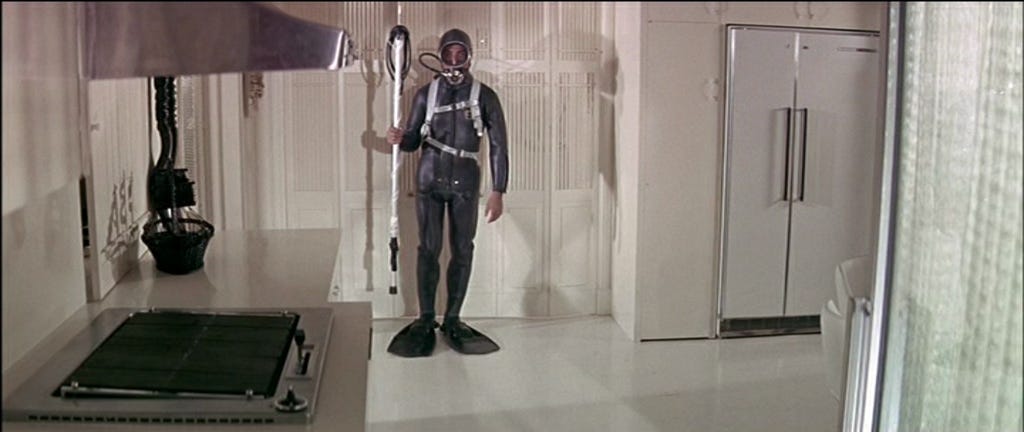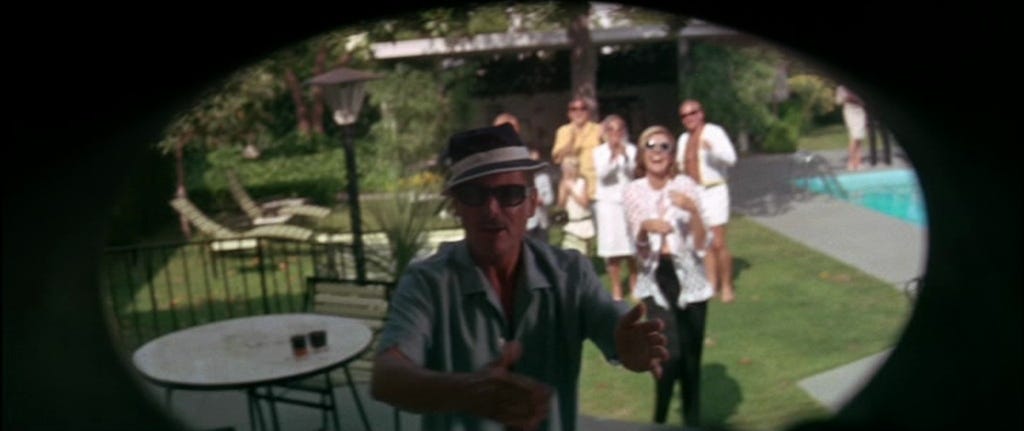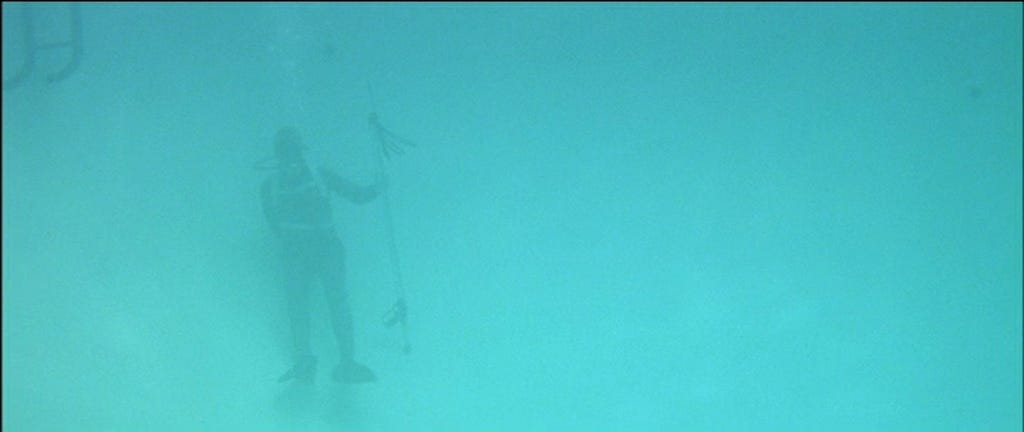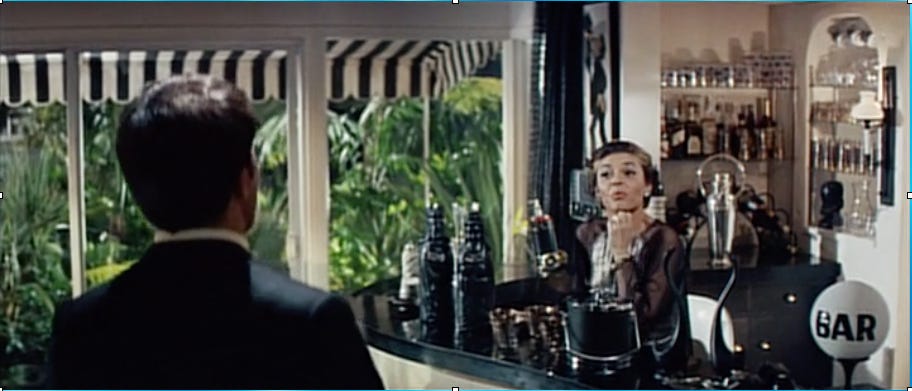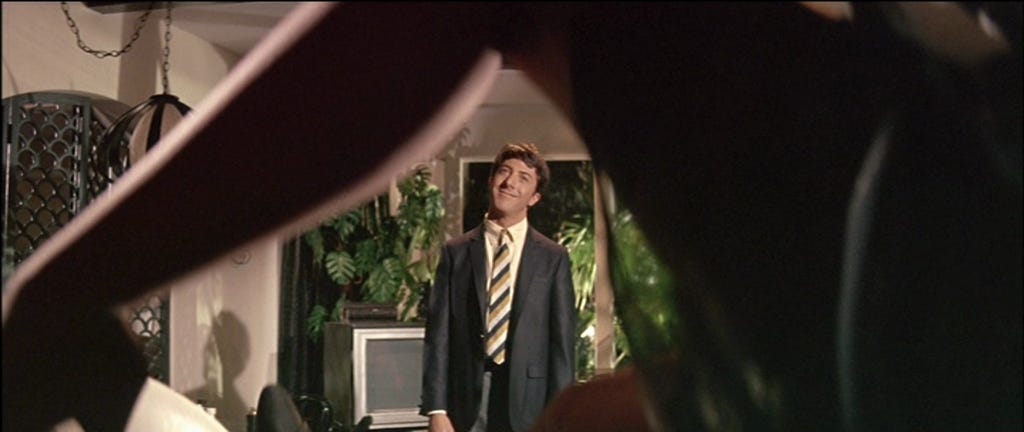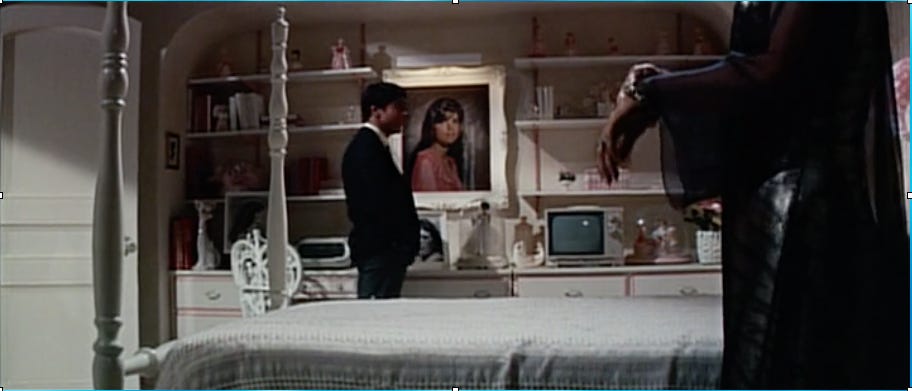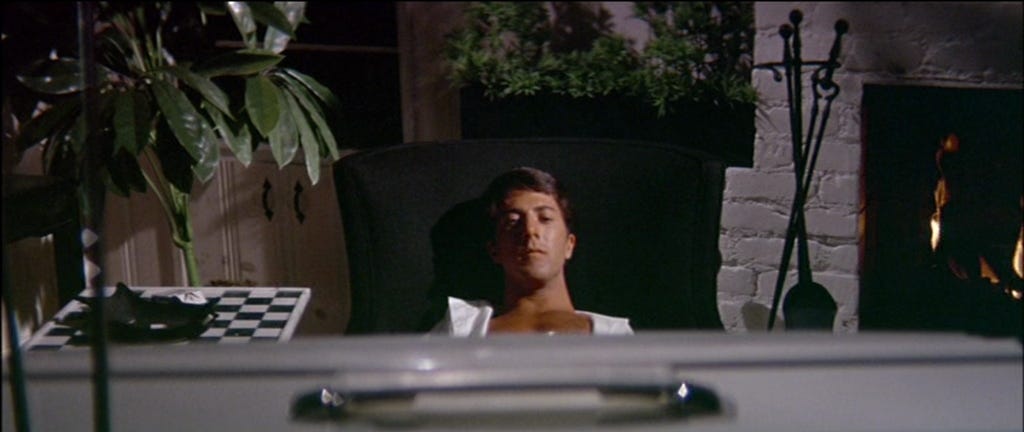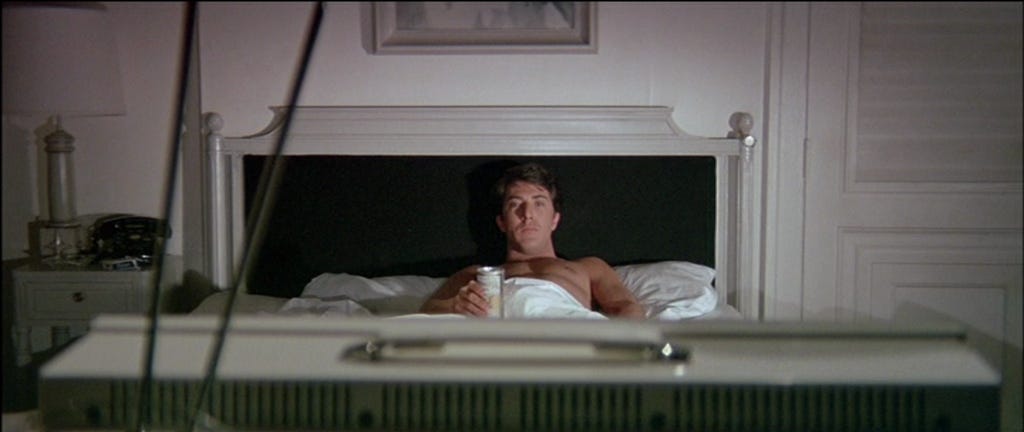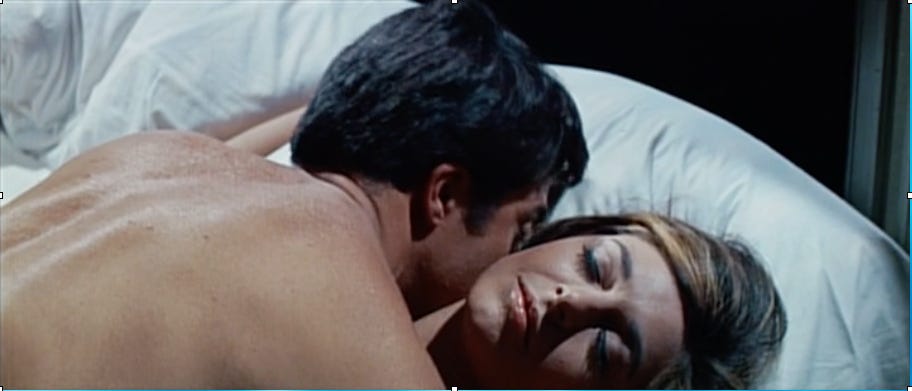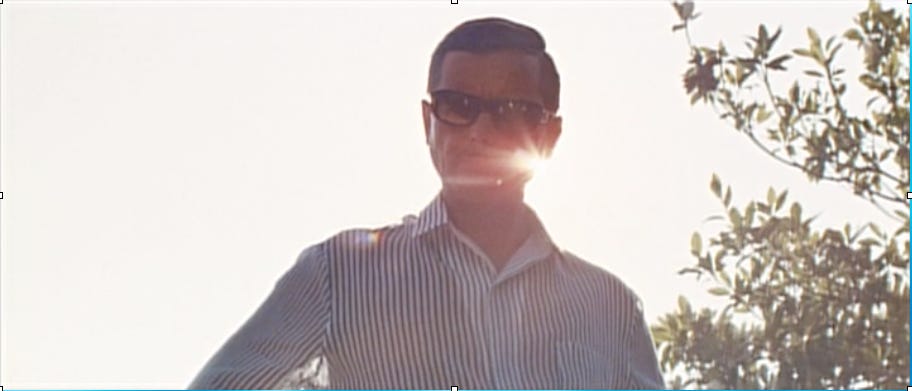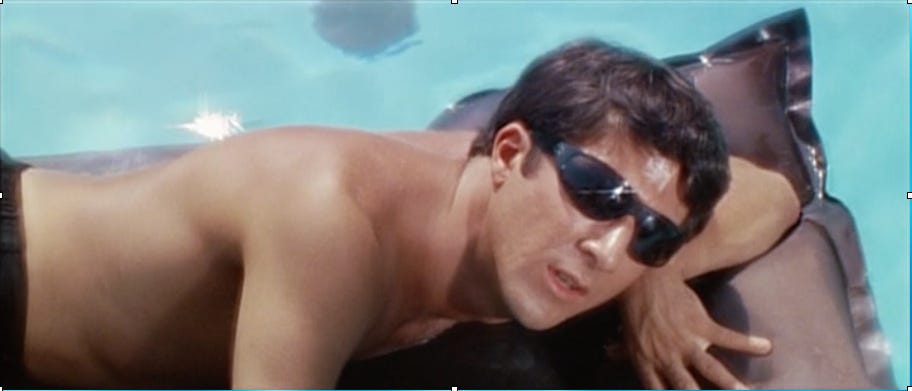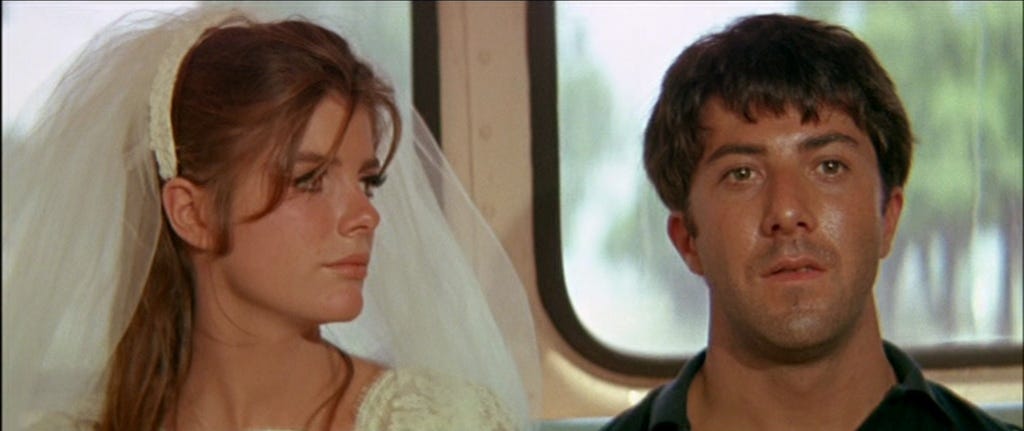As someone who teaches classes about film, I am routinely vexed by a simple question I often receive: What’s your favorite movie? (I also get this question about TV, but that’s the subject for a different column.) I decided a couple of years into my career I just had to pick something, because stumbling through an ambivalent response always killed the conversation.
So I choose The Graduate, which indeed was a movie I loved. As it was released in 1967, it certifiably qualified as old, and yet—as I have found showing the movie to students—it still feels thoroughly modern. It also remains very funny.
The fact that it is a very funny movie no doubt helps explain its blockbuster status upon release, as well as how it remains a very fun movie to watch. But it is also a very modernist film, adapting strategies in editing and cinematography that had been done before but maybe not in such a crowd-pleasing fashion (see the fantastic John Frankenheimer-directed, Rock Hudson-starring Seconds, for example). The camera work, production design, and editing make The Graduate a great film to teach.
Ben’s parents dress him up in an expensive scuba suit, apparently as a form of conspicuous consumption to show off to the neighbors. He lingers inside, like a child, before being paraded before the friends.
The film’s cinematography switches to a first person perspective, as we see his family and their friends through the lens of the scuba mask as he approaches the pool.
The we cut back to another shot of Ben, alienated and standing on the bottom of the pool.
When I was a brand-new graduate student in media studies, one of my professors had everyone in class write down information about ourselves on index cards so he could get to know us. He, too, asked that vexing question of what our favorite film was, and mine then was Apocalypse Now (in fact, it had been the subject of the regrettable essay I had submitted as a writing sample). I remember that when I talked to him about it, he said something about how Apocalypse Now was a kind of all-you-can eat smorgasbord, with something there for everybody—no matter what their tastes—to find to like.
That’s kind of how I see The Graduate—a very different, but also very ambitious film. The way Hoffman humiliates Katharine Ross’s character at a strip club is difficult to watch, but nothing like the cow decapitation in Apocalypse Now. That’s a scene I won’t be sharing grabs from…though I did subject a class or two to it back in my early days of teaching.
Mrs. Robinson first communicates her sexual availability to Ben after having him drive her home from a cocktail party. The set-dressing and props toy with the idea that Mrs. Robinson is stalking her prey. She invites him to have a drink in her jungle-lair.
It's not a kitschy tiki bar—too classy for that—but lush green plants but up against the picture windows all around.
After confronting Mrs. Robinson, he awkwardly apologizes and retreats to daughter Elaine’s room. It’s white and pink, with a four-poster bed and a painted portrait hanging among the shelves—there to witness the events, apparently.
This bedroom space amplifies the sexual tension and Ben’s awkwardness when Mrs. Robinson does in fact explicitly state her availability to him.
One of unique things about the film at its release was the use throughout of Simon & Garfunkel’s pop music as score. In one great sequence, “Scarborough Faire/Canticle” helps create continuity for a montage condensing Ben’s affair over the summer with Mrs. Robinson in melancholy fashion.
Ben drinks beer and watches TV in bed—at home alone and in a hotel room with Mrs. Robinson.
He climbs a top a pool raft, but then lands on top of Mrs. Robinson in bed…
…and turns his head after hearing his dad ask him, “Ben, What are you doing?”
The editing is playing with the shot/reverse-shot pattern we are all familiar with. In this sequence, we jump places in space and time, so that the reverse-shot finds us in a different context.
“Well, I would say I’m just drifting, here in the pool.”
“Why?”
“Well, it’s very comfortable just to drift here.”
Whatever its modernist cinematography and editing, The Graduate sticks pretty closely to the three-act structure model. The famous final sequence is essentially a single drawn-out turning-point in which Ben attempts to stop Elaine’s wedding. There’s a comical series of obstacles in his path from the beginning in Berkeley when he has to find out where the wedding is, to running out of gas after driving all the way to Santa Barbara, till the moment when Ben and Elaine escape the angry wedding mob at the church.
And then, the famously short and ambiguous final act when they escape on a bus. And the shot reveals, what now?
I still love watching and teaching The Graduate. But I don’t say it’s my favorite movie anymore. At least not today.


